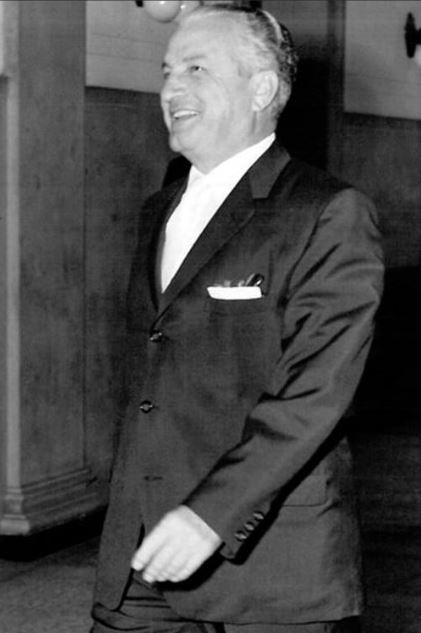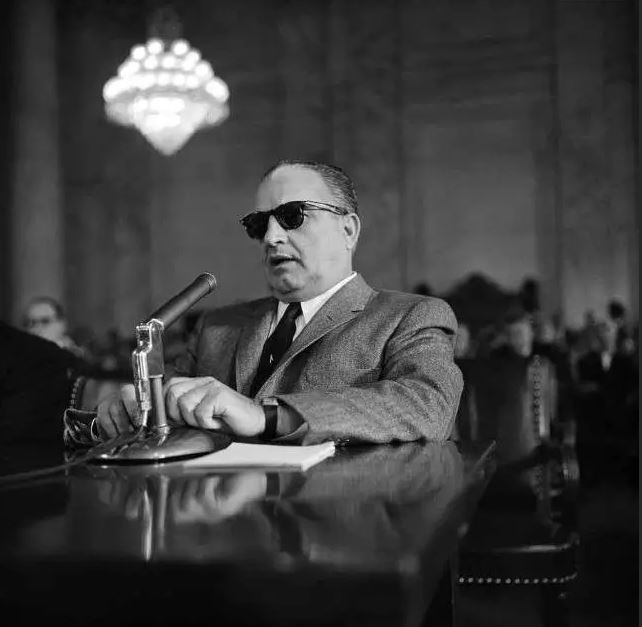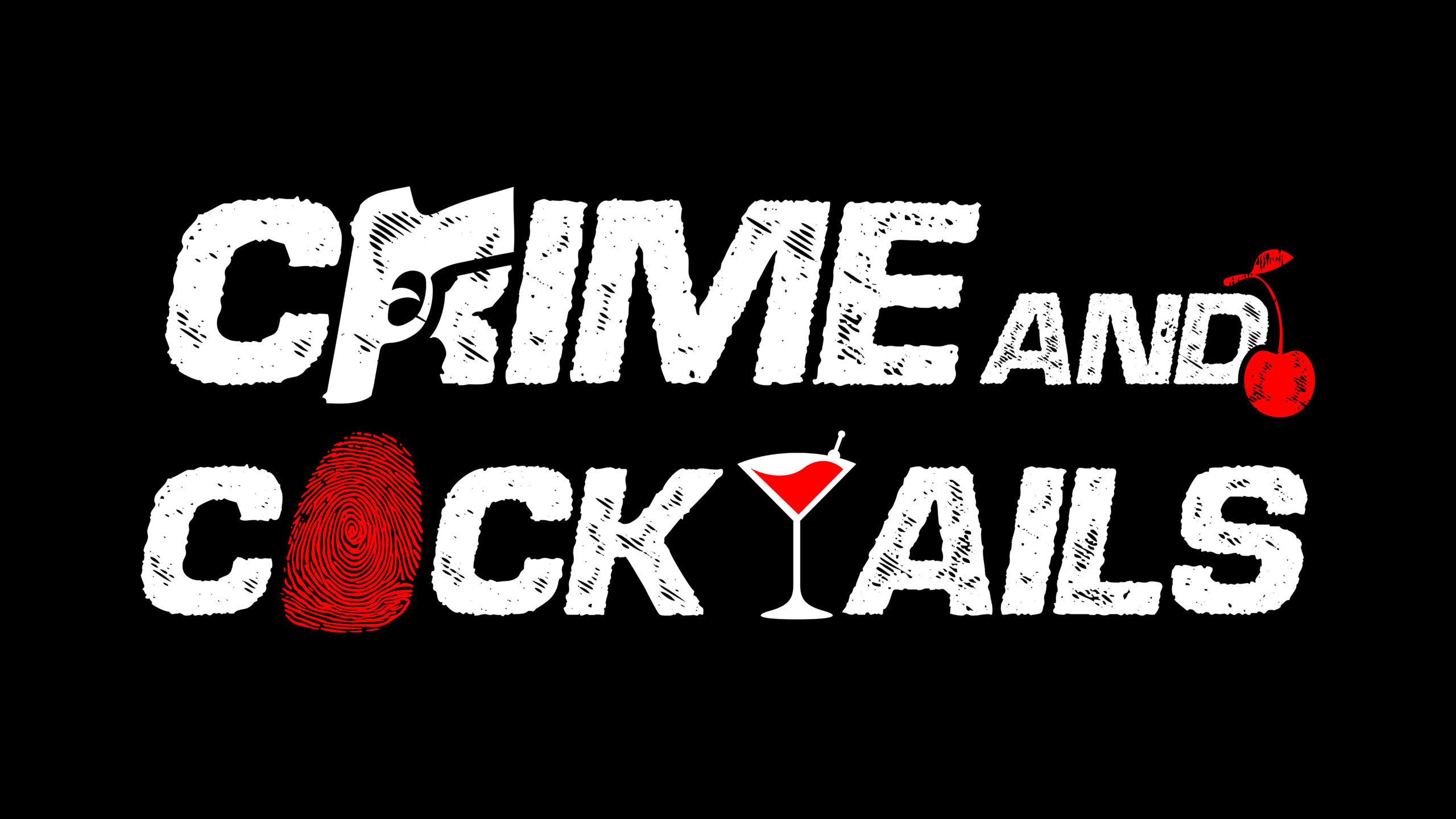Louisiana has always had a taste for the gothic. Cypress swamps swallowing secrets, jazz spilling out of midnight clubs, politics marinated in corruption—this is a state that thrives in shadows. But in the middle of the twentieth century, those shadows belonged to one man: Carlos Marcello, the undisputed boss of the New Orleans Mafia. His reign stretched from the 1940s through the 1980s, and while the official crime statistics of the period tell one story, the reality in Louisiana was darker, bloodier, and far more complicated.
This is the tale of crime in Louisiana during Marcello’s rule—where organized crime wasn’t just a symptom of lawlessness, but the very spine of the system.
The Boss in the Bayou
Carlos Marcello wasn’t flashy. Unlike New York dons who basked in headlines, Marcello thrived in the shadows. Born Calogero Minacore in Sicily, he was brought to the U.S. as a child, raised on the streets of New Orleans, and by his twenties was already knee-deep in racketeering. By 1947, he controlled the Louisiana crime family, operating from the swamps rather than skyscrapers.
Marcello’s genius wasn’t brute violence but his uncanny ability to stitch organized crime into the fabric of Louisiana politics and business. Slot machines, gambling, drugs, prostitution, labor rackets, and eventually narcotics—the streams of dirty money all flowed through him. And thanks to bribes, blackmail, and alliances with politicians, sheriffs, and judges, Marcello’s family operated with near impunity.

Crime in Louisiana: Beyond the Numbers
Official records from mid-century Louisiana paint a mixed picture. The homicide rate in New Orleans during the 1950s hovered between 7 and 10 murders per 100,000 people, high compared to the national average of around 4 per 100,000. By the 1960s and 1970s, murders escalated into the teens per 100,000, reflecting both urban decay and the violence of organized crime.
Yet these numbers are only the surface. Much of the crime tied to Marcello’s empire never reached police blotters. Victims of mob beatings rarely pressed charges. Witnesses vanished into bayous. Politicians who crossed the boss suddenly found themselves indicted, bankrupt, or mysteriously dead. Statistics didn’t account for the grip of fear that kept neighborhoods silent.
The Shadow Economy
Louisiana’s reputation for corruption made it fertile ground for Marcello. Illegal gambling dens flourished openly in Jefferson Parish. Strip clubs on Bourbon Street doubled as mob operations. The “French Quarter connection” funneled heroin from France through New Orleans into American veins, a pipeline tied directly to Marcello’s family.
By the 1960s, when heroin abuse began to spike nationally, federal narcotics agents frequently linked New Orleans traffickers to Marcello’s crew. At the same time, prostitution rackets and extortion schemes turned neighborhoods into ATM machines for the mob.
Even “legitimate” industries weren’t immune. Marcello muscled into construction, trucking, and even vegetable markets, charging “protection” fees. Every tomato, every sack of shrimp, every truckload of concrete moving through New Orleans might carry the fingerprint of organized crime.
This shadow economy not only boosted crime—it entrenched inequality. Wealth and power concentrated in the hands of mob-connected politicians and businessmen, while working-class Black neighborhoods bore the brunt of drugs, violence, and police neglect.
Politics in Marcello’s Pocket
No discussion of Louisiana crime under Marcello can ignore politics. Louisiana governors and New Orleans mayors were legendary for corruption. In this swampy environment, Marcello operated like a silent kingmaker.
Sheriffs who looked the other way on mob activity? Marcello funded their campaigns. Judges who dismissed cases? He lined their pockets. State legislators who pushed “reform”? They suddenly faced scandals or threats.
Perhaps the most infamous intersection of politics and crime came in the 1960s, when Marcello allegedly tangled with federal authorities under the Kennedy administration. Robert F. Kennedy, then attorney general, targeted Marcello aggressively, deporting him to Guatemala in 1961. Marcello clawed his way back, seething with revenge. Rumors swirled—never definitively proven—that Marcello played a role in the conspiracy to assassinate President John F. Kennedy in 1963.
Whether true or myth, the story cemented his image as the puppet master of Louisiana, a man whose power radiated far beyond the French Quarter.
Violence in the Streets
Marcello preferred corruption over carnage, but violence was never far. Gangland murders, car bombs, and beatings punctuated Louisiana’s criminal landscape. Rivals who challenged the family ended up face-down in canals.
For everyday New Orleanians, violence came in two forms: mob retribution, and the rising tide of street crime fueled by the narcotics trade. By the late 1960s, heroin epidemics ravaged poor communities, spiking robbery and murder rates. Police, often compromised or underfunded, struggled to keep order.
By the 1970s, New Orleans was among the most violent cities in America, with homicide rates climbing past 20 per 100,000—more than triple the national average. While Marcello wasn’t personally pulling the trigger, his grip on the heroin trade and his corruption of institutions made him the architect of an environment where violence thrived.
A Culture of Silence
Perhaps the most insidious impact of Marcello’s reign was cultural. Fear and fatalism permeated Louisiana. Locals spoke of the mob in hushed tones, referring to Marcello as “the Little Man” but never daring to utter his name directly. Reporters who dug too deep often found their sources drying up—or their cars exploding.
Police officers learned early: some cases were never to be solved. If the victim was mob-connected, evidence had a way of disappearing. Jurors feared retribution. Lawyers knew better than to push too far.
This culture of silence warped Louisiana’s justice system. Citizens learned not to trust police, and criminals learned they could act with relative impunity. The result: a breeding ground for lawlessness that outlasted Marcello himself.

The Fall of the Boss
By the late 1970s and early 1980s, federal prosecutors finally mounted a serious assault on Marcello’s empire. He was indicted in multiple racketeering cases, including the notorious “Brilab” sting, which exposed bribery schemes involving insurance contracts and public officials.
Marcello spent years in prison, his health failing, his influence waning. By the time he died in 1993, the Louisiana Mafia was a shadow of its former self. But the legacy of his reign—decades of normalized corruption, institutional rot, and unchecked violence—remained etched into Louisiana’s crime statistics.
Legacy of a Criminal Kingdom
What did Louisiana’s crime look like under Marcello? It looked like homicide rates consistently higher than the national average. It looked like a heroin epidemic that devastated neighborhoods. It looked like unsolved murders, vanished witnesses, and politicians who danced like marionettes on mob strings.
But beyond numbers, it looked like a society that accepted crime as part of daily life. In Louisiana, the line between underworld and government blurred until citizens could barely tell them apart. The legacy of Carlos Marcello is not just one man’s empire—it is the enduring stain of a system where organized crime became ordinary.
Closing Thoughts
Today, Louisiana still struggles with some of the highest crime rates in America. While the Mafia’s overt grip has faded, the structural damage of Marcello’s reign lingers. Distrust in institutions. Deep-rooted corruption. Communities scarred by drugs and violence.
The ghosts of Marcello’s empire haunt the bayous still. Every unsolved murder, every crooked politician, every statistic showing Louisiana at the top of the homicide charts is, in some small way, a reminder of the dark decades when one man ruled the shadows.


